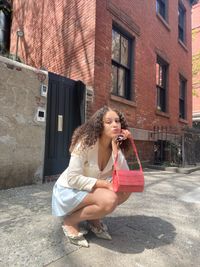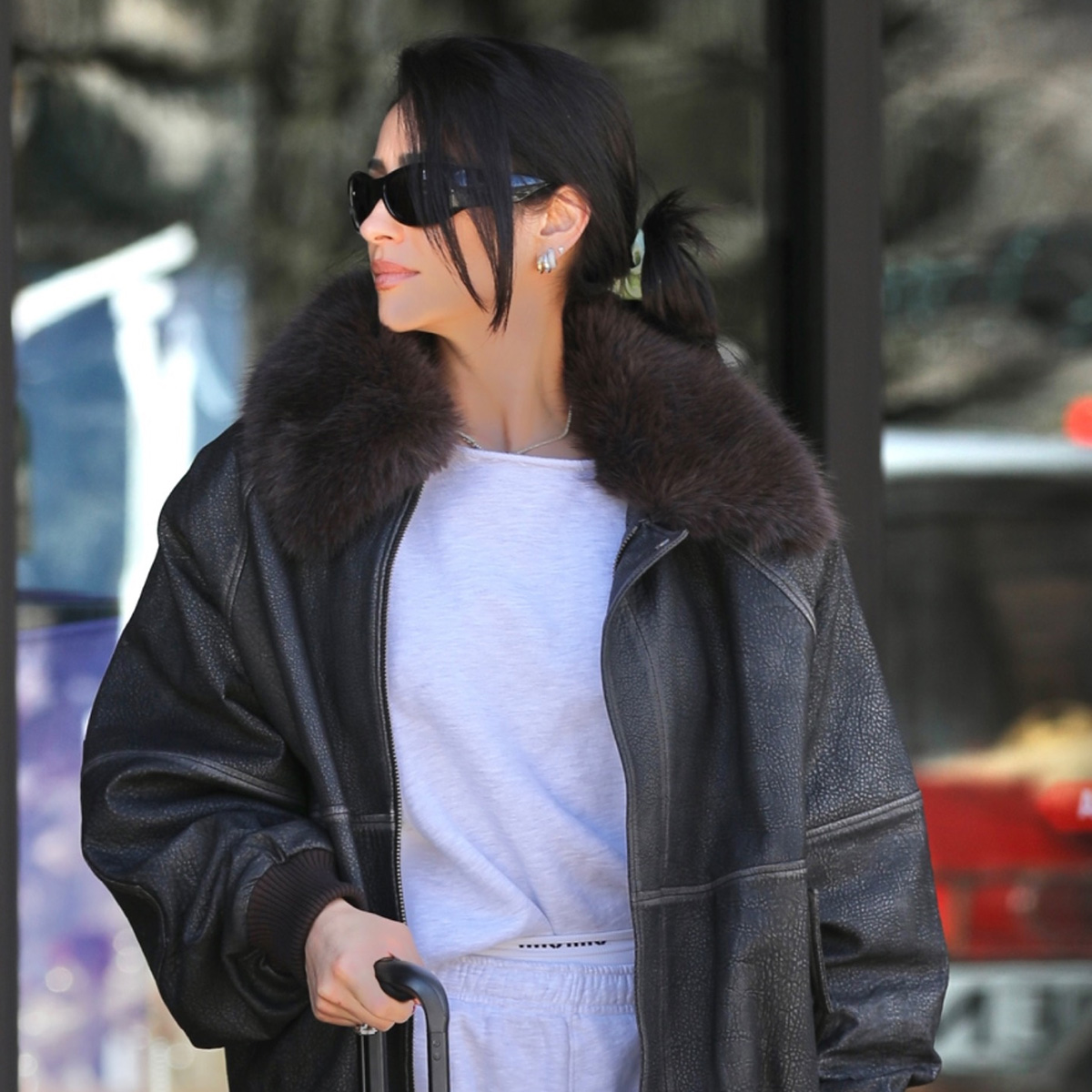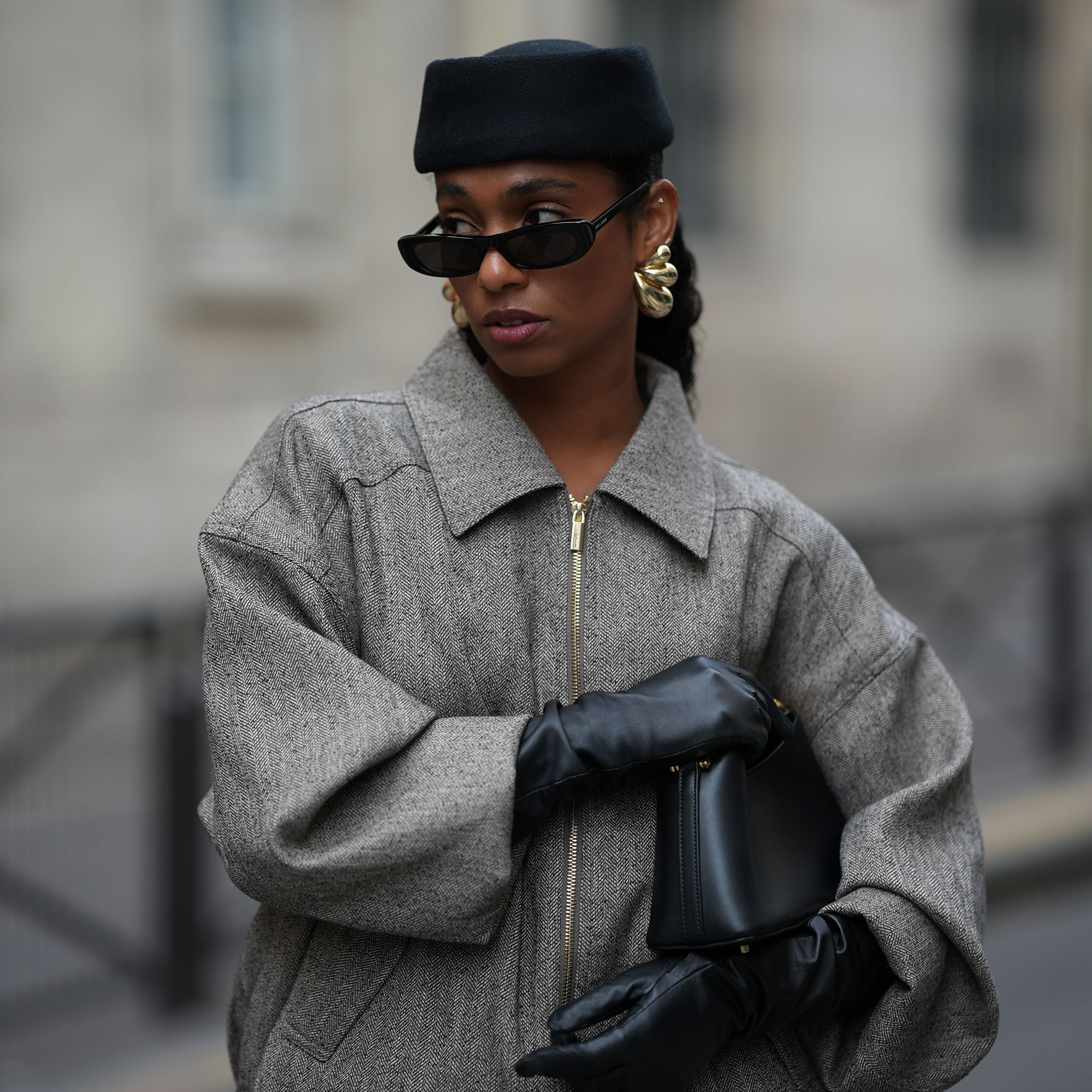Rina Sawayama Is Redefining What It Means to Be a Pop Star

On the hottest day in recent recorded history in London, Rina Sawayama phoned in to our Zoom call from her poshly decorated loft wearing a simple white ribbed tank with her raven hair slicked back. While it’s easy to succumb to exhaustion under such boiling temps, the artist kept her cool throughout our 45-minute interview as we dove deep into topics such as her relationship with songwriting, childhood trauma, the joys of aging, and how her work is redefining what it means to be a pop star today. It seemed as if no topic was off the table. Her depth as a creator and a human was on display. But to fully understand who Sawayama is as an artist, you can’t go off of her pop persona alone. You have to understand the defining moments that have shaped the It girl who stands before us.
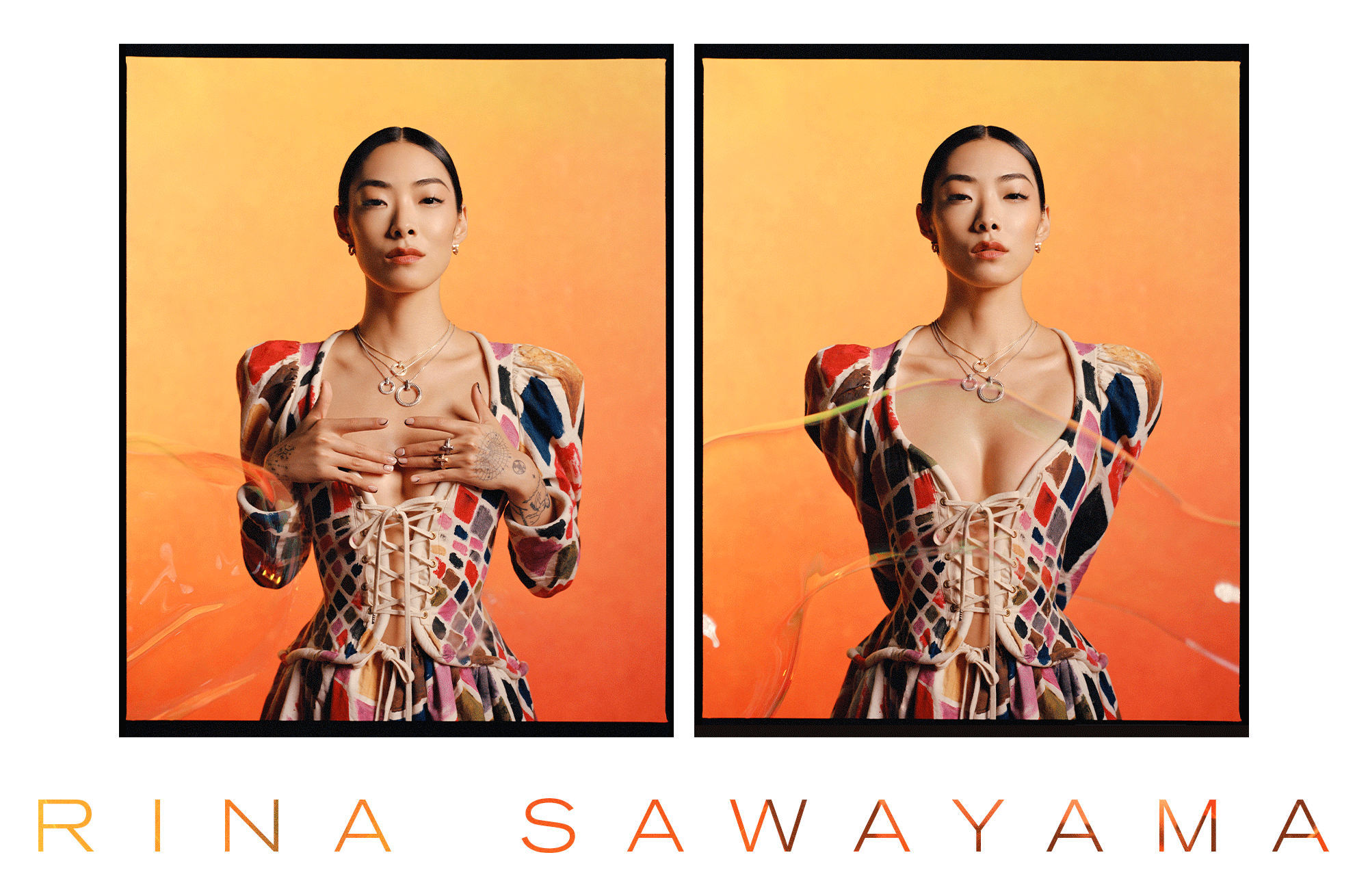
Sawayama was born in Niigata, Japan, and moved to London at the tender age of 5, where she shared the same bedroom with her mother for years. Growing up, Sawayama struggled with assimilating and, perhaps most importantly, envisioning what her life could be like. "I’ve loved singing since I was young, but when it came down to making music as a job or a career, it wasn’t until my mid-20s that I realized it was a possibility,” she says. For many immigrants, the driving force behind leaving their homes is the desire for better opportunities, but the ambiguity of what that actually looks like is comparable to being presented with a word in an unfamiliar language—a person won’t understand what it means until they can define it for themselves.
Language can be both empowering and oppressive, something Sawayama knows well. On one hand, songwriting can help an artist process or understand their experiences. On the other, there’s space that exists beyond just the definition of a word. That space can manifest a second-language barrier between family members (Sawayama has spoken about this openly), but it can also be the home for the part of one’s life that has yet to be written. Defining who you are and learning to live for yourself takes time, patience, and flexibility, which was very much the case for Sawayama as she navigated her own career path. Though music was still in her purview, she studied political science, psychology, and sociology at the University of Cambridge. "I think I learned what I didn’t want to do through the process of elimination,” she says. "I didn’t want to be a politician or be an academic. But I also learned how to work hard. I don’t think I’ll ever work that hard in my life again.”
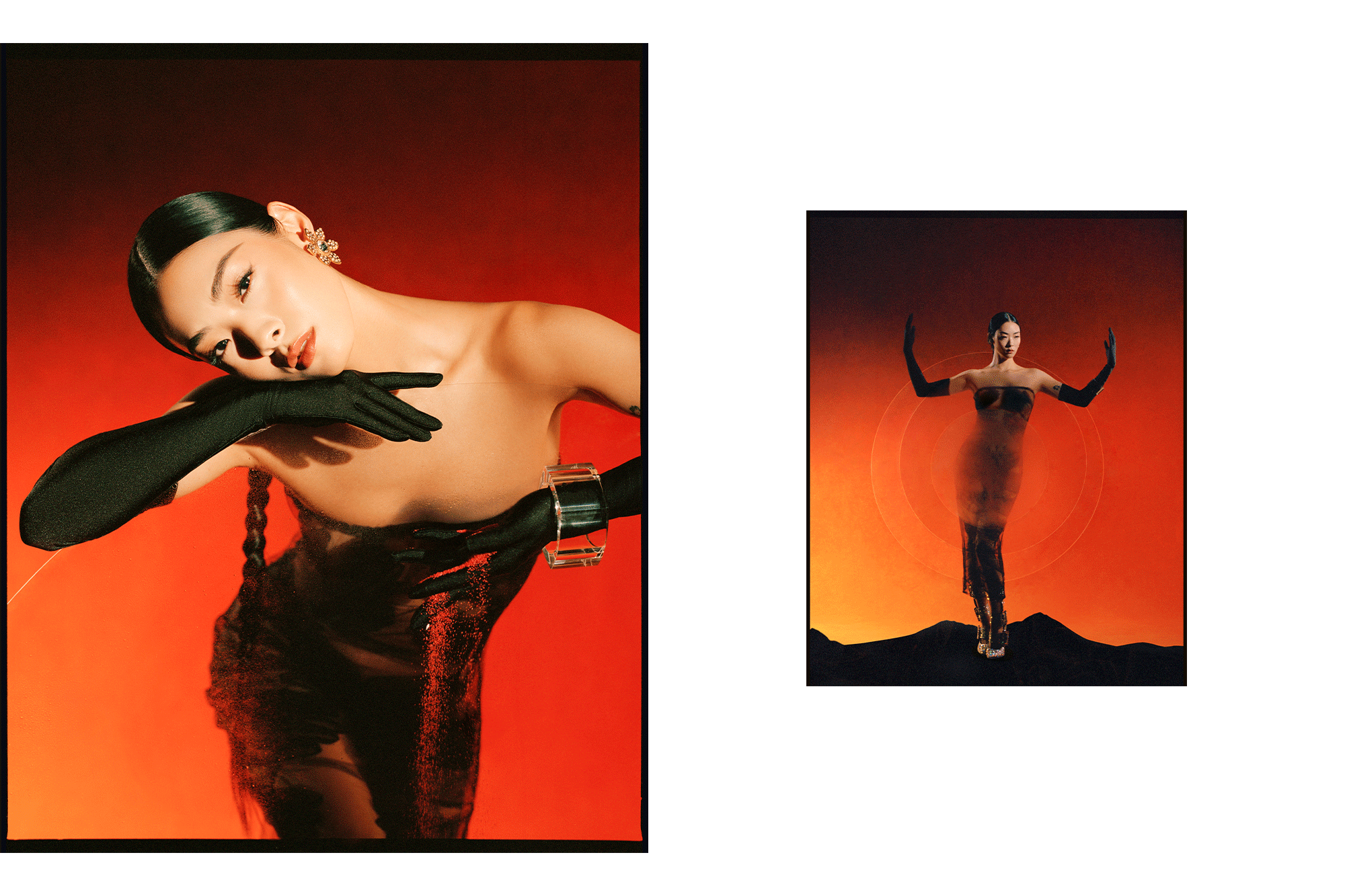
That’s not to say that Sawayama was an overnight success story. Long before she released her critically acclaimed debut album, Sawayama, and started climbing the charts, she was grinding through her mid-20s—bussing tables, modeling, and taking on a few other odd jobs to self-fund her music. "Being an independent artist for so long was not about making music. It was about surviving,” she shares. "You want to make sure people are getting paid for their work, and I was always focused on how to fund the next thing, the next video, the next tour.” The hustle eventually paid off for Sawayama when she signed a record deal with independent label Dirty Hit in 2019.
Sawayama’s success can be attributed to the artist’s gritty approach to pop music. While her vocals are traditionally within the realm of "pop,” she’s not afraid to sample melodies from a mélange of genres—including rock, country, and techno—to create a distinctly alternative sound all her own. She’s also not one to shy away from heavier topics. When probed about her writing process, she reveals, "At the end of the day, my goal is to have my music be like a Trojan horse, where you can hide deep and sad meanings within a song, but the melody and production have to be good.” That artful balance is unequivocally on display in breakout hits like "STFU!” from Sawayama and "This Hell” from her forthcoming album, Hold the Girl. Both explore the facets of her identity and her angst in navigating microaggressions and homophobia as a British Japanese pansexual woman in the 21st century.
The music industry hasn’t always been receptive to exploring those topics, but Sawayama’s relationship with her label and dedication to her craft have cultivated the space for these conversations to happen. Musicians—specifically female musicians—have always been pushed to create in a way that adheres to a homogenous fantasy of what a pop star is, but that’s not the case with Sawayama’s team. "I’ve found confidence in my music and my creative process because they’ve trusted me so much,” she says. With the ability to sing about what she wants, wear what she wants, and even get help with the whole social media thing (Sawayama admits to being late to jumping on the TikTok train), she’s been able to define what a pop artist is on her own terms. With that, she’s found the freedom to hold space for herself.
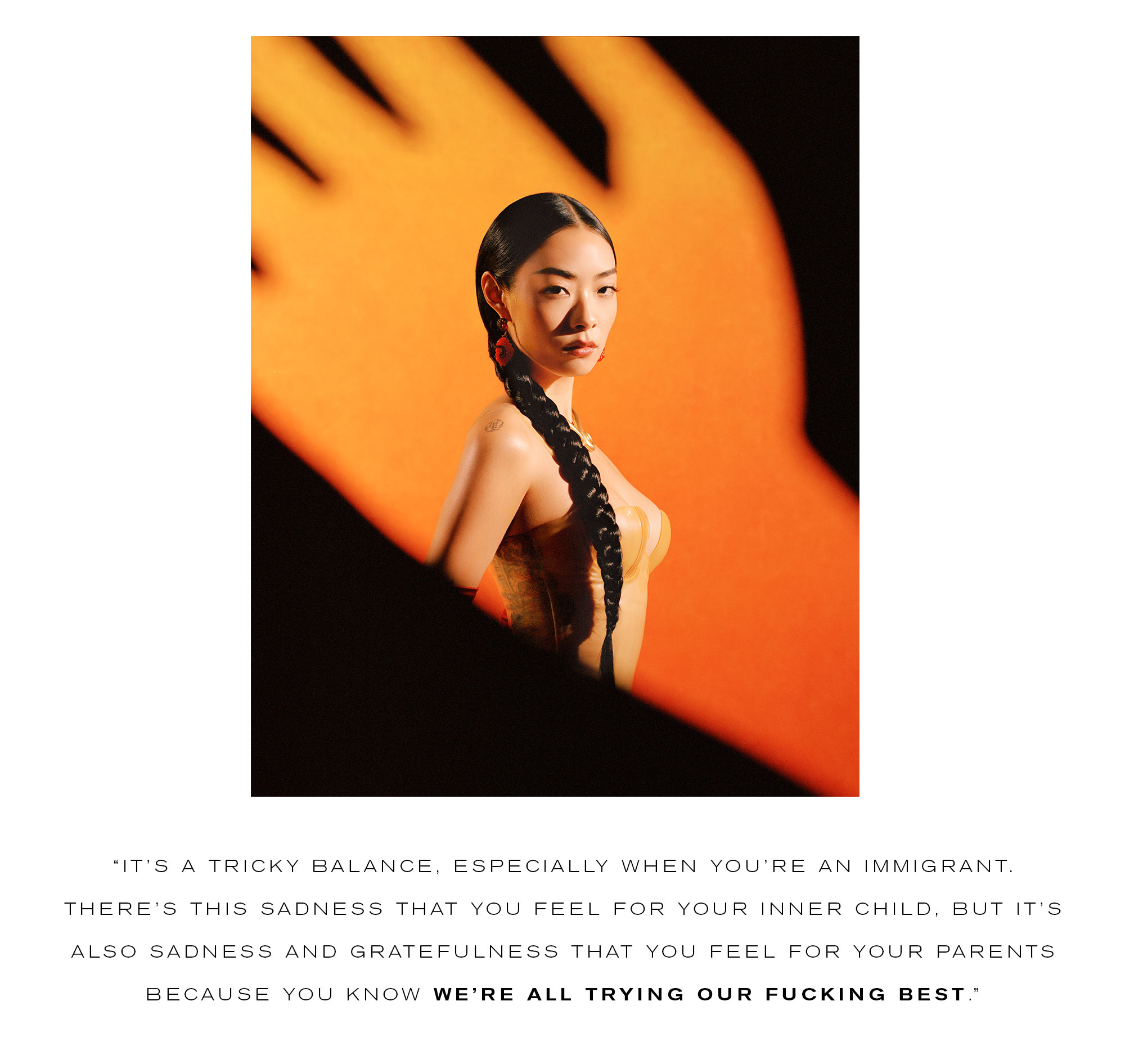
Holding space for oneself is about making room for self-reflection, self-care, and self-parenting, and in listening to her sophomore album, it’s clear Sawayama has reached that stage in her life. Set to release in September, Hold the Girl, in Sawayama’s own words, "is about holding your inner child. It’s about speaking to the girl that’s gone through a lot.” The topic of healing is explored throughout the album’s 13 tracks, and in songs such as "Phantom” and "To Be Alive,” you can feel how music has been a part of Sawayama’s journey back to herself. "Through this process of reparenting myself and looking at my inner child to see what I would have wanted, I’m holding space for myself and giving myself creative freedom,” she elaborates.
The ability to create without an attachment to the outcome is not something that every artist has the privilege of relishing in, especially when you’re an immigrant, a person of color, or someone coming from poverty. When you’re worried about making it to the next day, you’re not necessarily thinking about things that aren’t going to feed you, or at least, that’s something that Sawayama admits to feeling. "I’ve never thought of myself as a creative person, but I think I’m learning to give myself that space,” she confesses. "Songwriting has always been very functional for me. Maybe it’s because I didn’t have this room for myself when I was younger to be like, ‘I need to write songs as my creative outlet.’” She pauses, then continues, "As children of immigrants, you feel obliged to look after your parents because they sacrificed (and they tell you every day). So you feel like you’ve got to make them proud by getting good grades, which is not a healthy pressure to put on a child.”
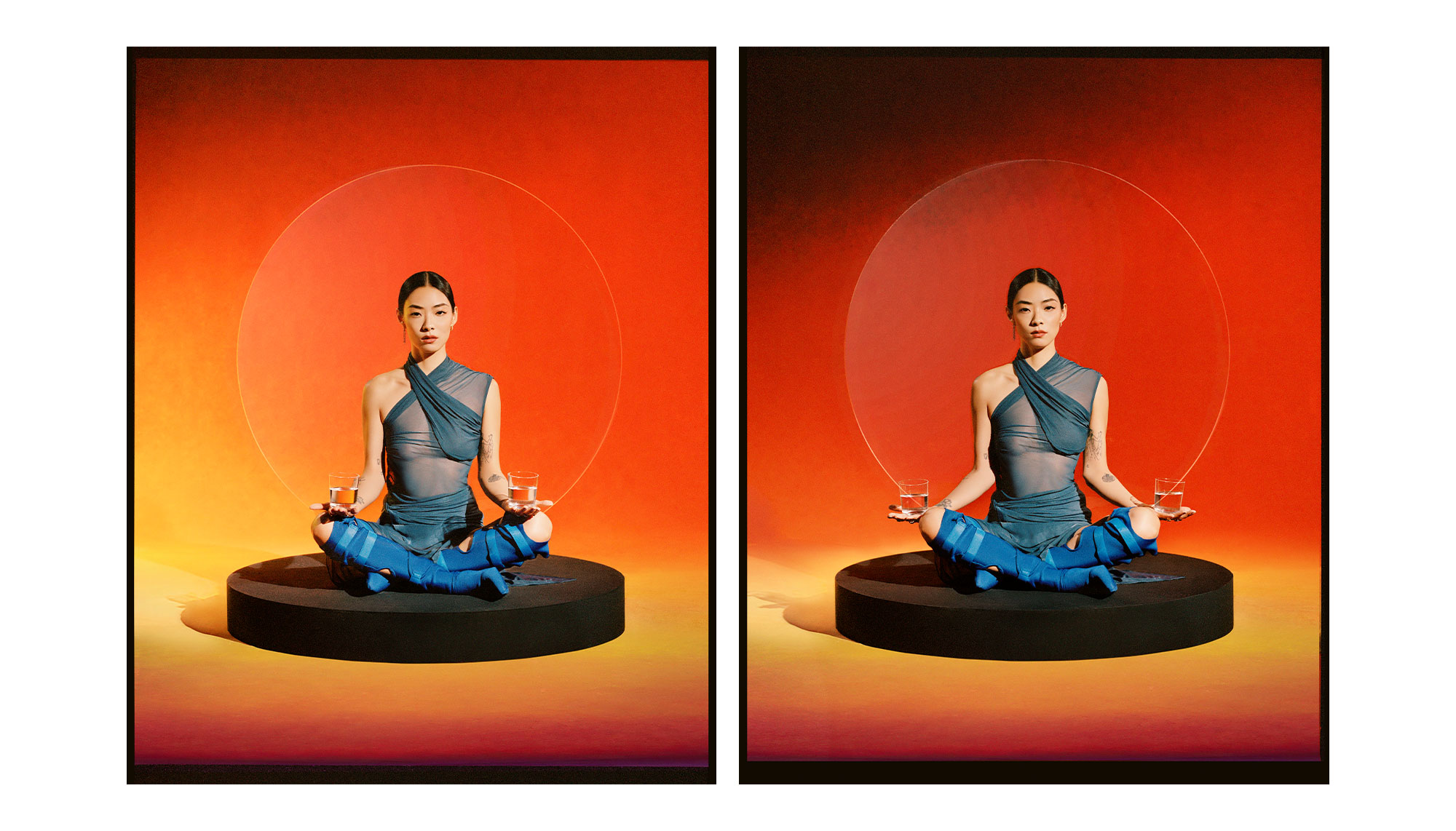
That expectation to succeed is something that Sawayama has held on to for most of her career. "It’s taken time to learn to enjoy and make space for creativity and to remove the status markers around it, giving myself the ability just to enjoy it rather than it being a means to an end,” she says. Her relationship with outside validation also shifted after the onset of the pandemic. "For things to stop the way they did during the pandemic was the first time that I’ve actually been able to think about what’s happened,” Sawayama says. "It was a catalyst to stop doing things that give me validation as a productive person in society and just indulge in things purely for pleasure or joy that don’t require other people.”
The things that bring Sawayama joy are the "boring” pleasures in life: reading a book, using her new espresso machine, and, in her words, "chilling in bed like a duvet.” But beyond simple indulgences, she relishes growing older. She beams, "The beauty of getting older is that it only gets better from here.” And in many ways, that perspective is how she’s been able to reflect on her adolescent years holistically.
"Thirty-two is an age you think is so ancient when you’re young,” she says. "But when you reach it, you feel so young inside, but you’re able to see your younger self as a child and detach in a healthy and helpful way.” Seeing herself fully isn’t something that magically happened with time. It took therapy and accountability too. But Sawayama feels like she’s finally at a point where she’s accepted her flaws and everything that’s happened in her life and released the hold her past had on her in order to move forward. That’s evident in how she speaks about her life and can acknowledge the multiple perspectives surrounding her experiences. "It’s a tricky balance, especially when you’re an immigrant. There’s this sadness that you feel for your inner child, but it’s also sadness and gratefulness that you feel for your parents because you know we’re all trying our fucking best.”
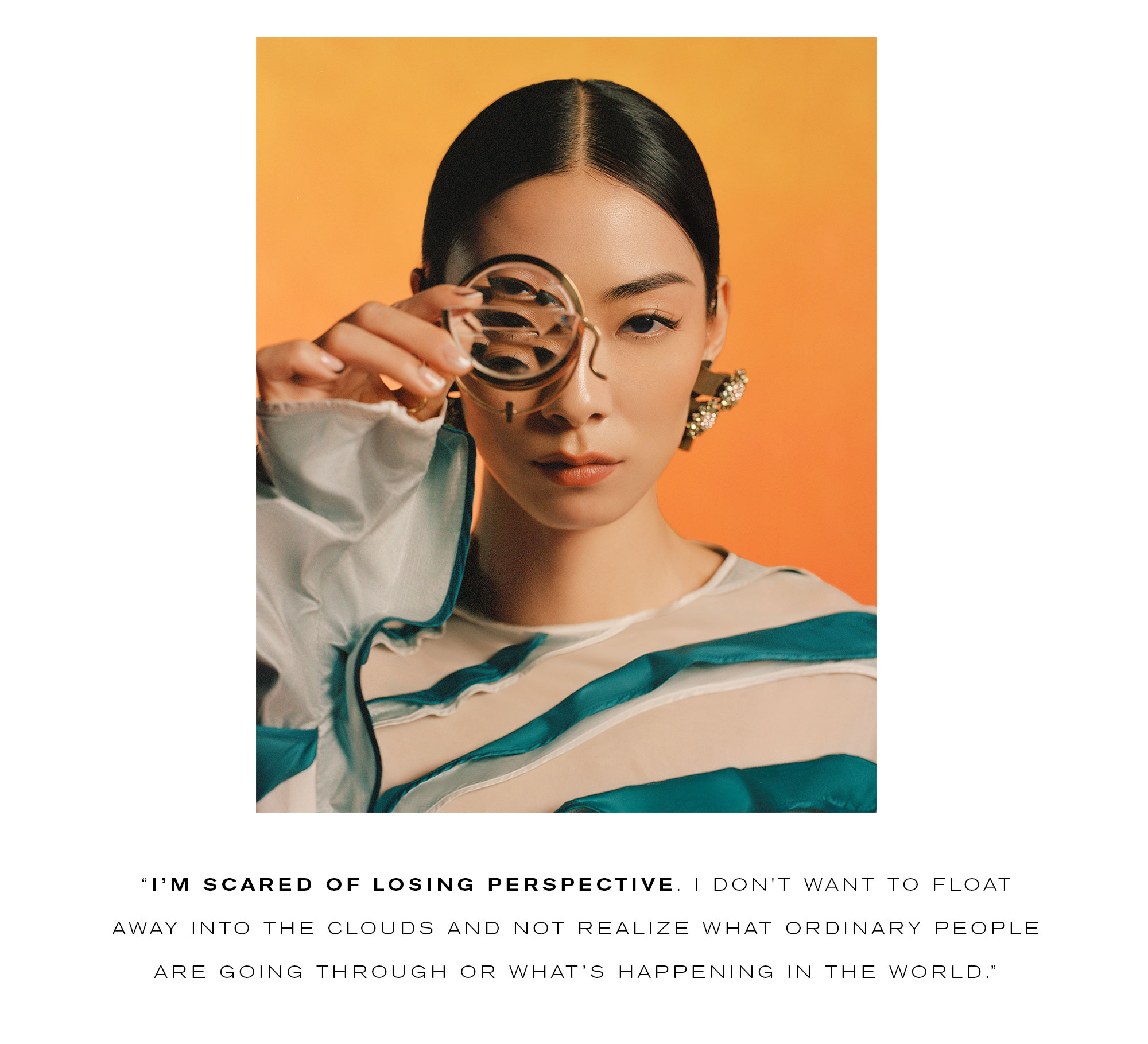
While it may be hard to accept that some part of yourself had been unsatisfied as a child, Sawayama isn’t afraid to hold her own hand through it. The result is a woman so undoubtedly comfortable in who she is that she doesn’t feel the need to change herself to get her moment in the spotlight. The pressure that comes with fame is something that Sawayama is acutely aware of. "What I hold so dearly is that I was able to come into this industry later than the average pop girl,” she says. In an effort to not get caught up in it all, she’s built a healthy wall of separation between who she is and the pop persona she presents to the world. But she’d be lying if she didn’t admit that she feared what would come out of her sudden emergence as an artist.
"I’m scared of losing perspective,” she says. "I don’t want to float away into the clouds and not realize what ordinary people are going through or what’s happening in the world.” While Sawayama may fear getting lost in the glitz and glam of the industry, it seems unlikely she ever would, especially considering how grounded she is within herself. After all, this is someone who hasn’t succumbed to the pressures of fitting herself into the perfect pop-star mold. Sawayama knows that’s not reality, and she’s not overly concerned with how others perceive her surface appearance. "If my clothes make any difference to anyone, I think they reflect how I feel about the separation between my pop persona and who I am. I would rather keep that disconnection, even if people think I’m not very stylish in real life.”
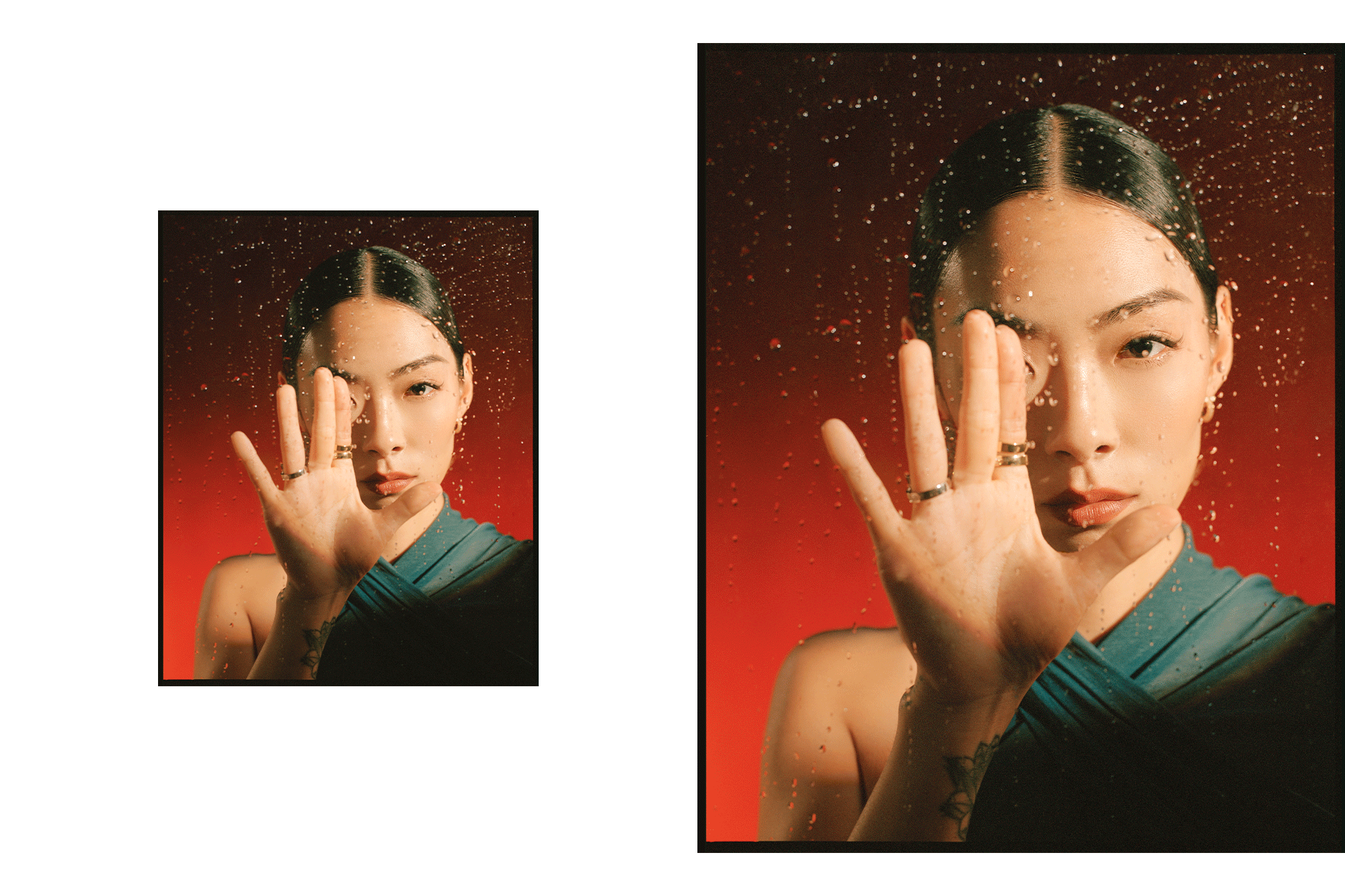
Upon further inspection, it’s clear that she understands a fundamental truth: It’s all fantasy—whether it’s the image of the flawless model (a career that never fully satisfied her in the way songwriting has) or the pristine pop-star image that has always been separate from reality. "I think it’s important to admit that it’s a fantasy because keeping up the idea can lead to exploitation, and it leads to corruption,” Sawayama insists. And she’s right. Maintaining an image of perfection both within broader pop culture and within our personal lives is what can cost people their mental health. Through self-reflection and songwriting, Sawayama has been able to see through the fantasy, and she’s hoping to do the same for others.
Using her platform to advocate for future generations, Sawayama has effected noteworthy change in her industry and society at large. She successfully argued for allowing non-UK passport holders to be eligible for BRIT Awards and Mercury Prize nominations and urged UK leaders to ban conversion therapy. "We only grew up with a minimal number of pop stars or models who all looked very similar. But now, many people of various ethnicities, sizes, and gender identities are in the spotlight. This next generation of stars shows what it means to be real,” she says. From our viewpoint, Sawayama sees the gap between where language is, where music is, and where the culture is, and she’s filling it in—one song at a time.
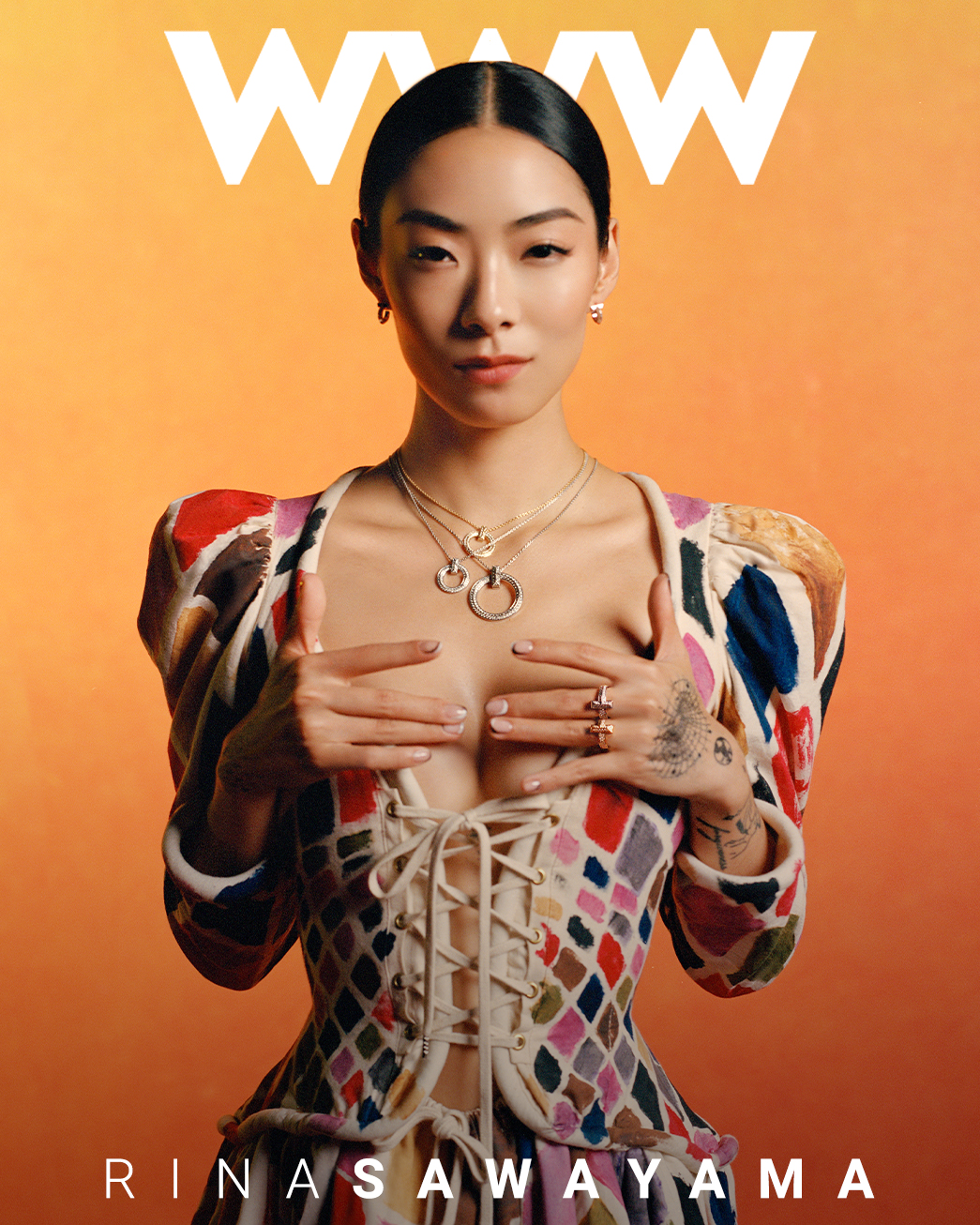
Photographer: Han Yang
Stylist: Flora Huddart
Hairstylist: Tom Roppongi
Makeup Artist: Mona Leanne
Manicurist: Ami Streets
Set Designer: Phoebe Shakespeare
Producer: Noot Coates/Town Productions
Creative Director: Alexa Wiley
Next: Sadie Sink Is No Longer the New Kid in Town
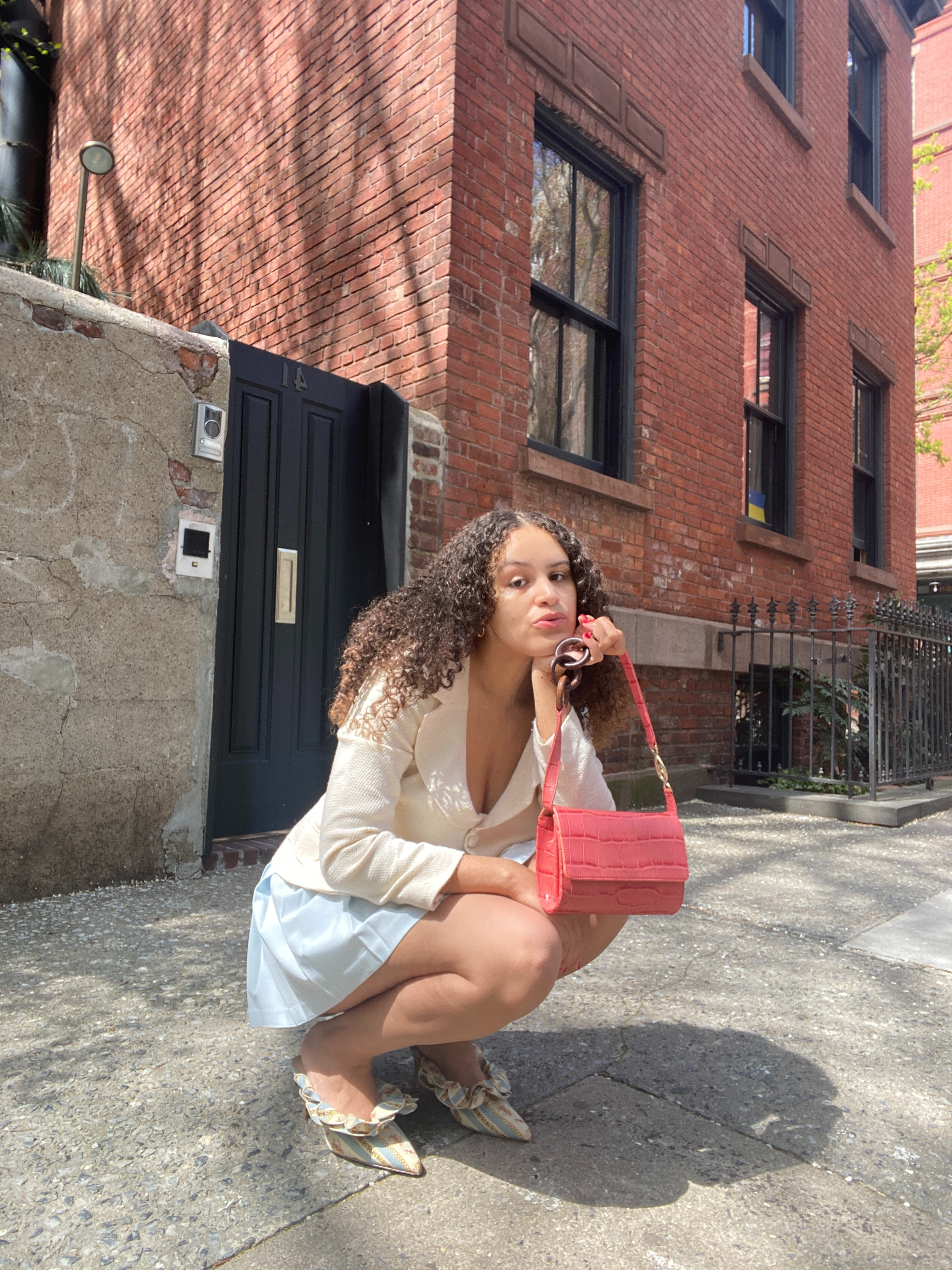
Jasmine Fox-Suliaman is a freelance writer and editor living in New York City. What began as a pastime (blogging on Tumblr) transformed into a lifelong passion for unveiling the connection between fashion and culture on the internet and in real life. Over the last decade, she's melded her extensive edit and social background to various on-staff positions at Who What Wear, MyDomaine, and Byrdie. More recently, she’s become a freelance contributor to other publications including Vogue, Editorialist, and The Cut. Off the clock, you can find her clutching her cell phone as she's constantly scrolling through TikTok and The RealReal, in search of the next cool thing.
-
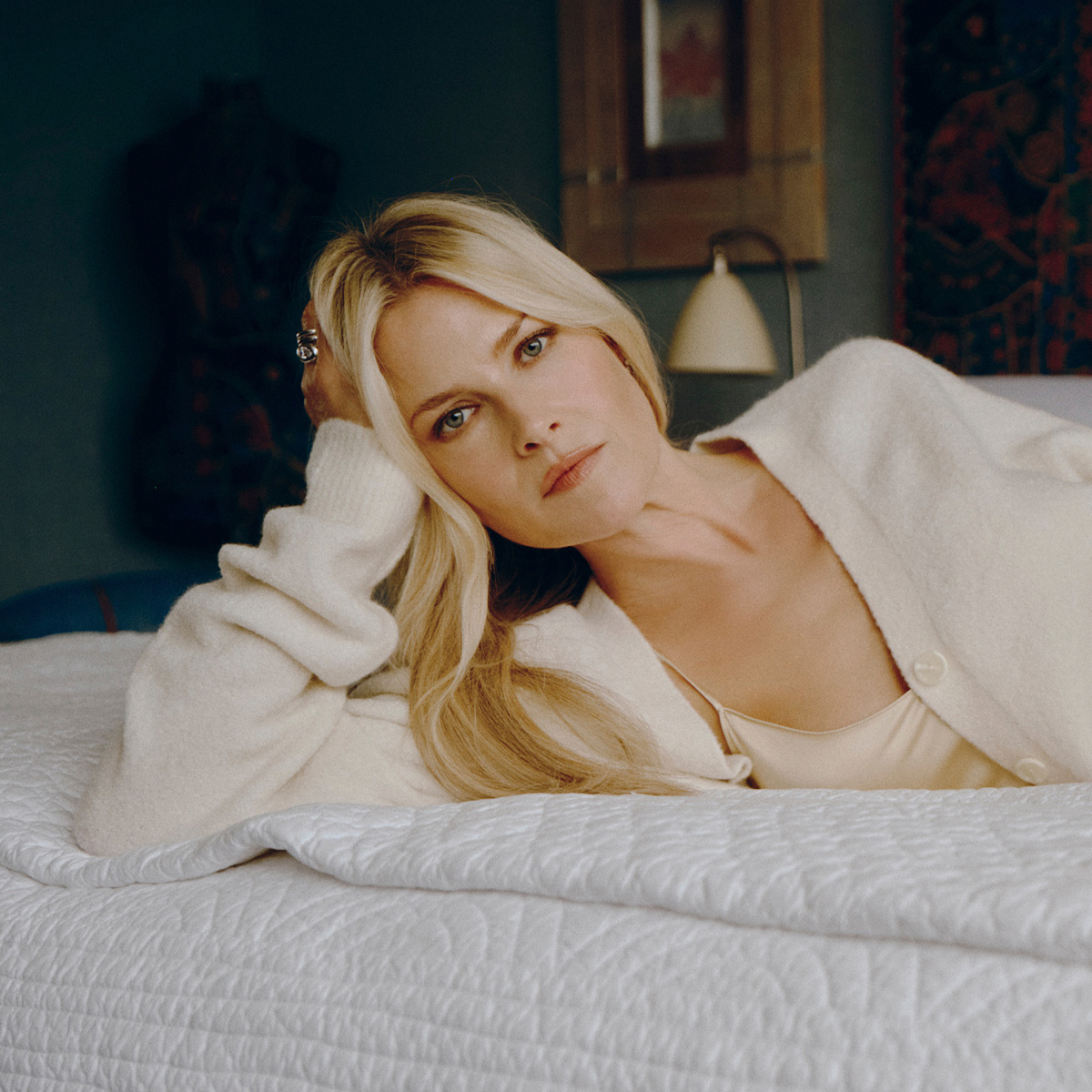 Ali Larter on the Privilege of Playing Landman's Angela Norris
Ali Larter on the Privilege of Playing Landman's Angela Norris"I think there's a little part of all of us that just wants to be that rebellious in life."
-
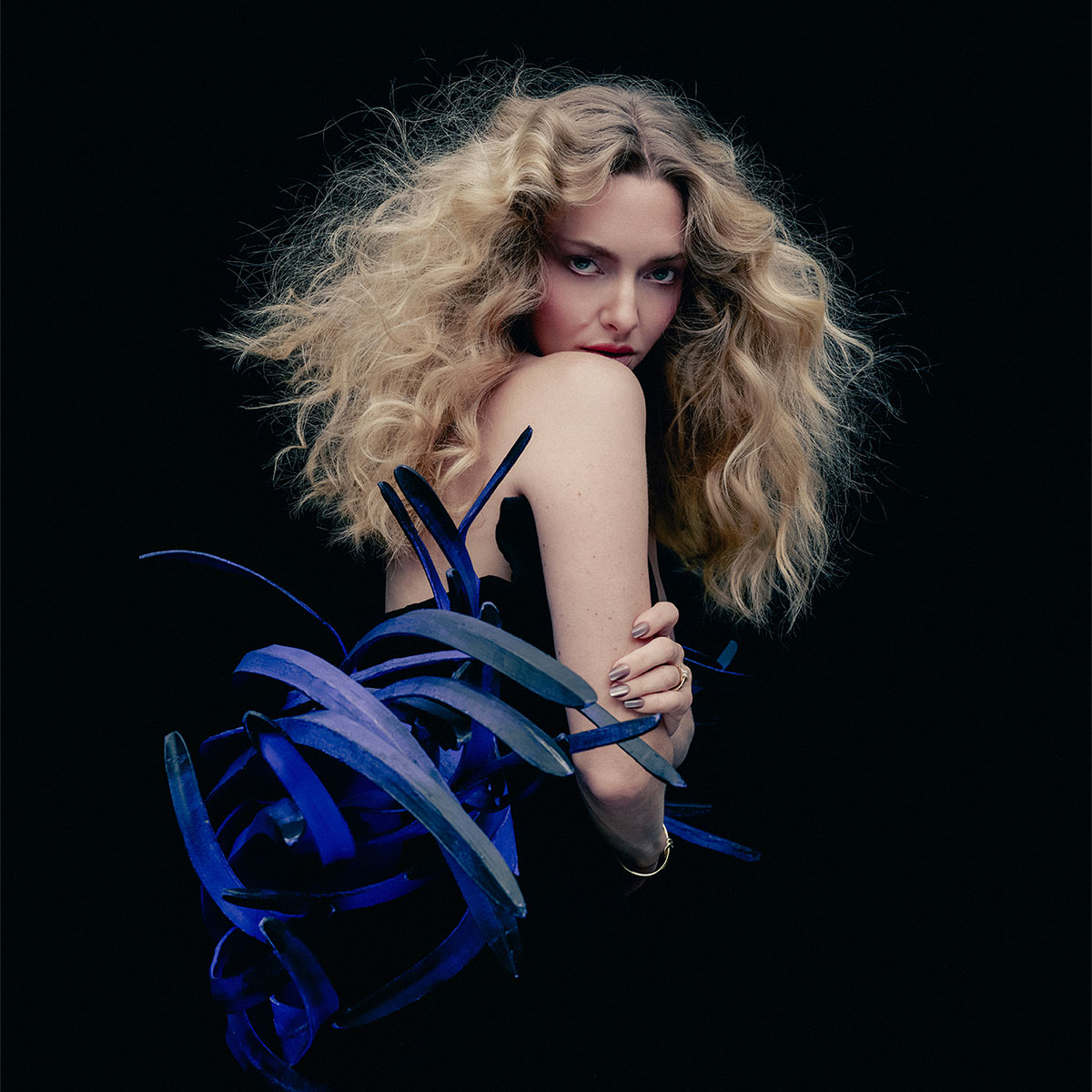 Amanda Seyfried Is the Queen of Keeping It Real
Amanda Seyfried Is the Queen of Keeping It RealFor our December cover story, the actress talks with Tyler McCall about her two buzzy new films, that controversial IG post, and staying grounded.
-
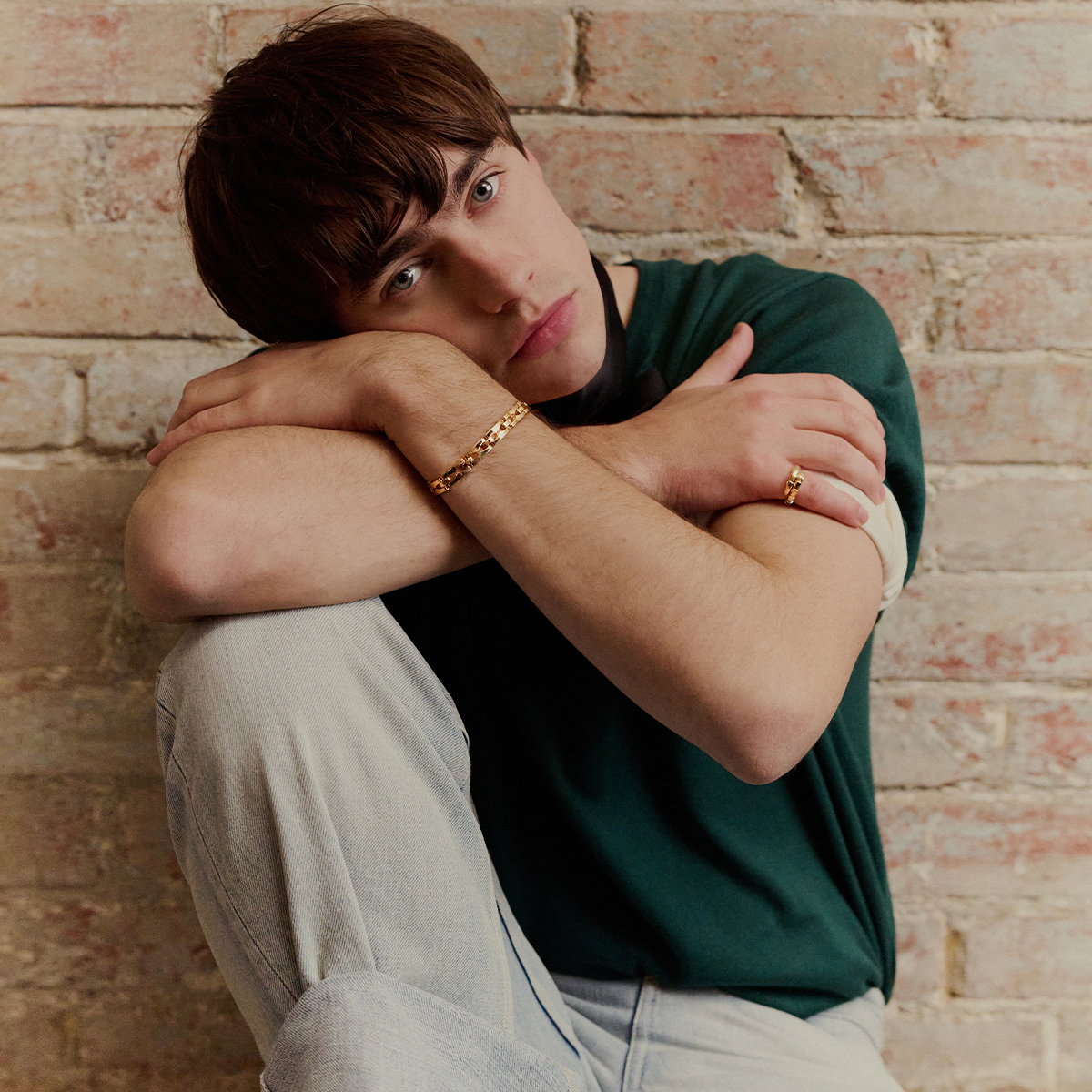 You're About to Be Seeing a Lot of Spike Fearn
You're About to Be Seeing a Lot of Spike FearnA new charming and talented It Brit has entered the chat.
-
 In Conversation With Hollywood Rising Star Mari Yamamoto
In Conversation With Hollywood Rising Star Mari YamamotoThe Rental Family actress on human connection, working with her idols, and writing her own roles.
-
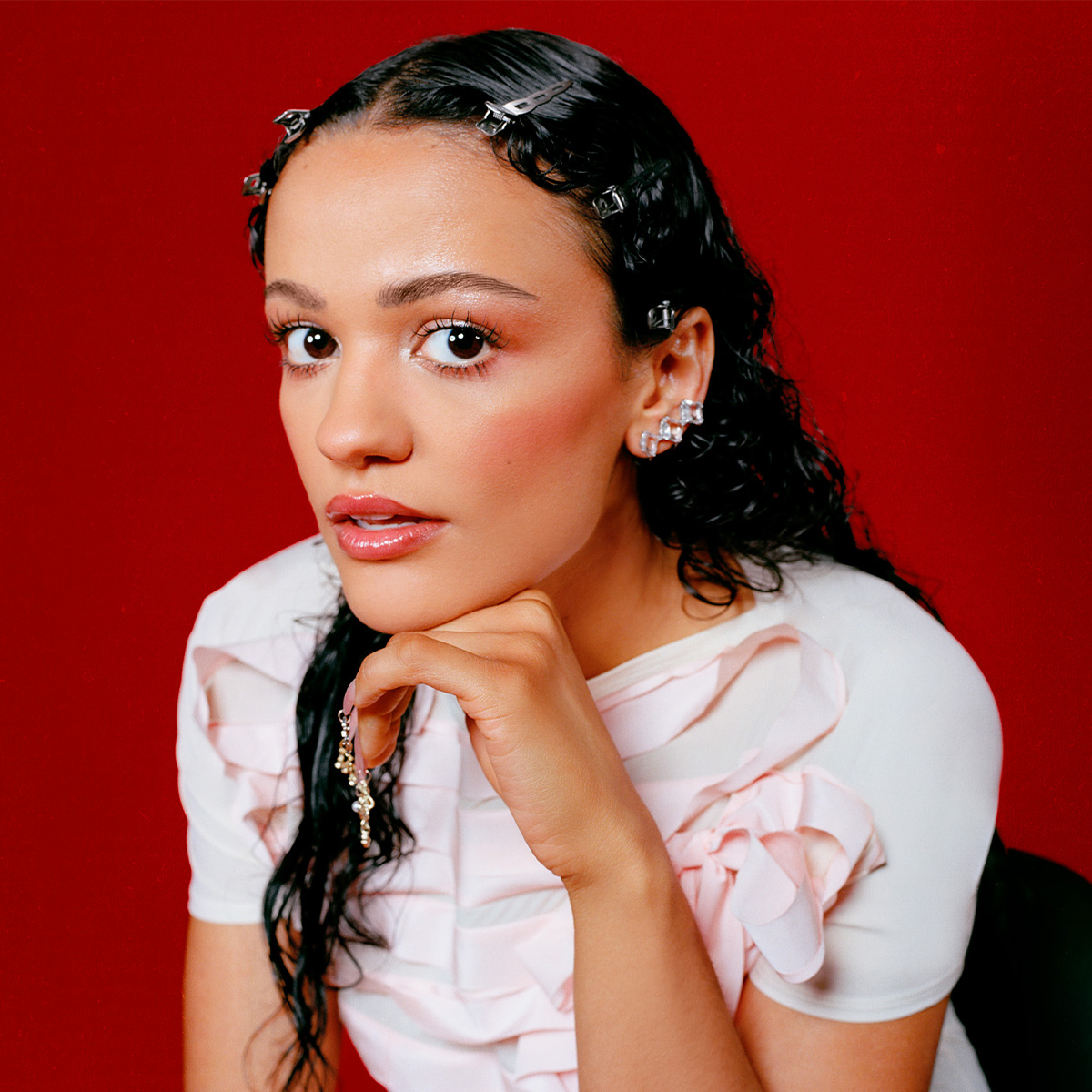 Wicked's Marissa Bode Is Finding Magic in Herself
Wicked's Marissa Bode Is Finding Magic in HerselfRead the full story.
-
 George Russell on Growing Into His Personal Style
George Russell on Growing Into His Personal StyleThe five-time race winner talks watches, paddock 'fits, and finding confidence in fashion.
-
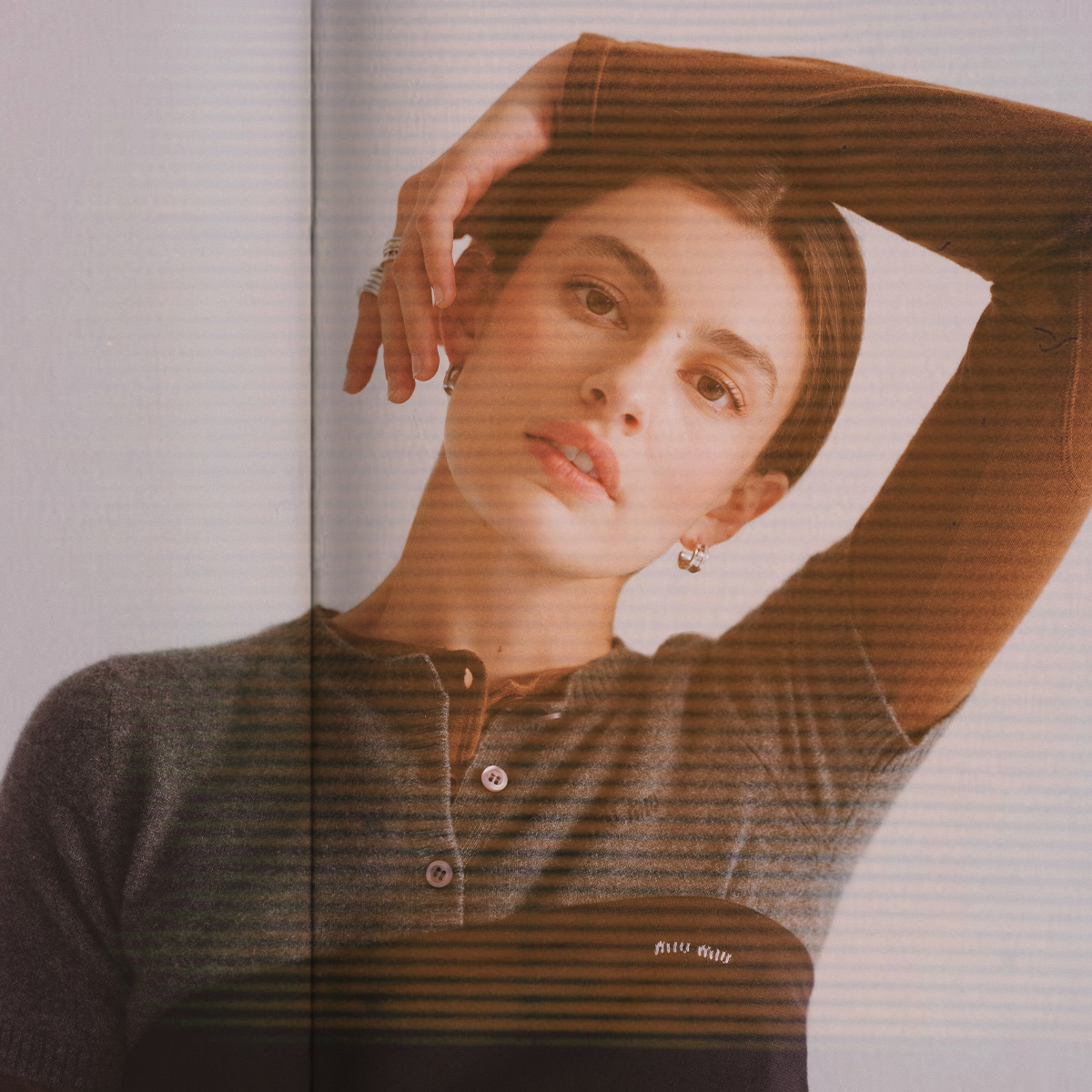 The Musical Metamorphosis of Diana Silvers
The Musical Metamorphosis of Diana SilversThe actress and model is adding "musician" to her résumé with her breakout album, From Another Room.
-
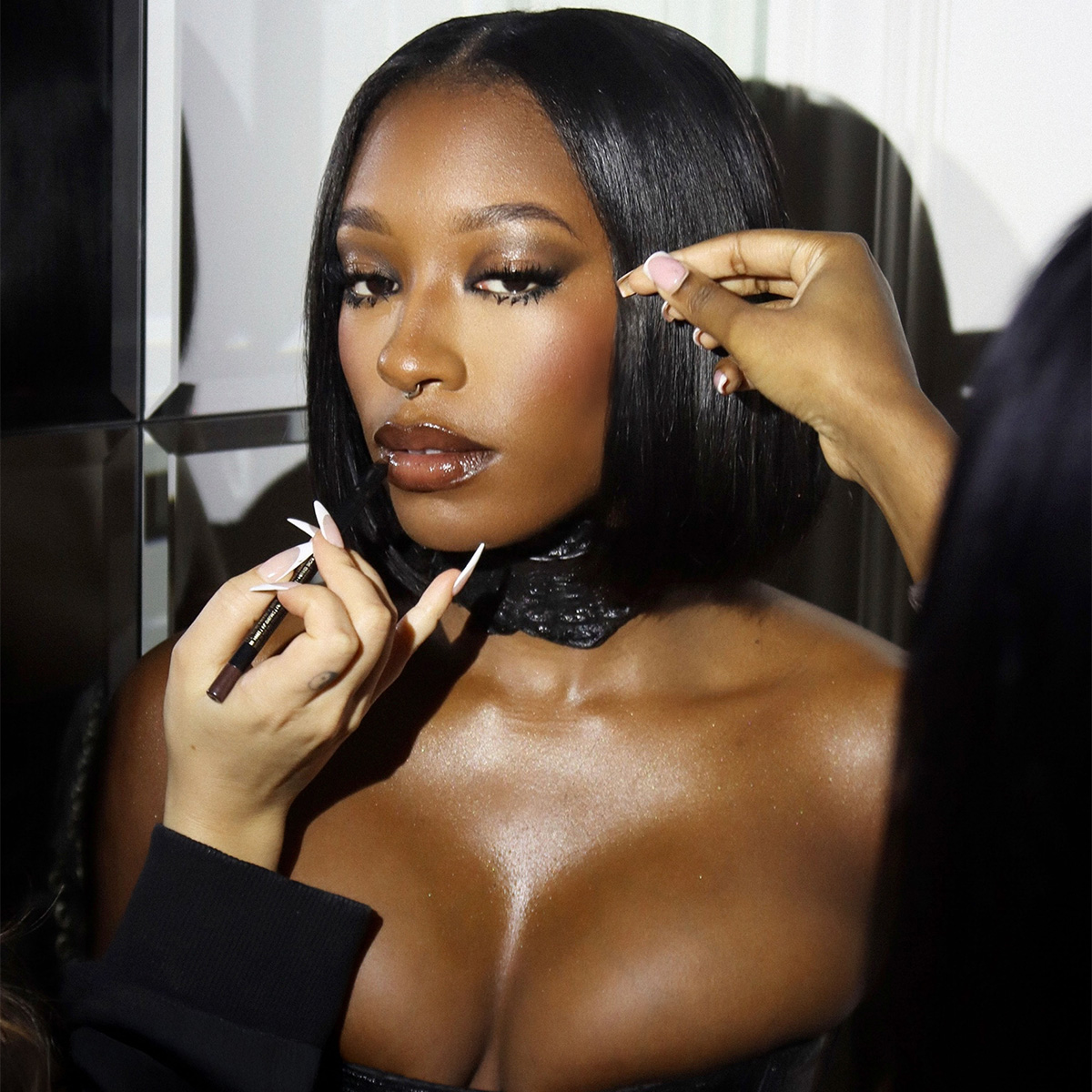 Serena Page Went Full Elphaba at the Wicked: For Good NYC Premiere—See Her GRWM Diary
Serena Page Went Full Elphaba at the Wicked: For Good NYC Premiere—See Her GRWM DiaryWe have exclusive BTS pics.
